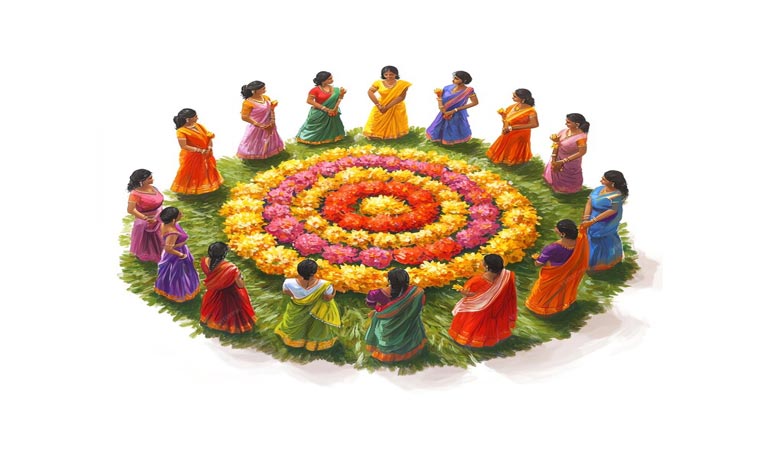Bonalu A Festival That Showcases Telangana’s Rich Heritage
Bonalu an enchanting festival that celebrates the essence of Telangana’s vibrant culture, is more than just a religious event. It is a testament to the state’s deep-rooted traditions, historical significance, and communal spirit. As the streets come alive with vibrant colors, melodious tunes, and sumptuous aromas, the festival becomes a spectacle that captivates locals and visitors alike. Let us delve into the various facets of this iconic festival. Village photography during Bonalu captures the vibrant traditions, colorful processions, and cultural celebrations of the festival. It highlights the local people, their rituals and the festive atmosphere in the village setting.
1. The Fascinating History of the Bonalu Festival
The Bonalu festival history is deeply intertwined with the cultural and religious fabric of Telangana, particularly the twin cities of Hyderabad and Secunderabad. The festival is dedicated to the worship of Goddess Mahakali, also known as Maisamma, Pochamma, Yellamma and other regional forms. The origins of Bonalu can be traced back to the early 19th century during a time of great distress for the people of Hyderabad.
In 1813 a devastating plague swept through the twin cities claiming thousands of lives. The residents desperate for divine intervention turned to the Goddess Mahakali for protection. A military battalion from Hyderabad, stationed in Ujjain prayed to the Goddess at the Mahakaleshwara Temple seeking her blessings to rid their homeland of the plague. They vowed to install an idol of the Goddess in Hyderabad if she granted their prayers.
Miraculously the plague subsided, and upon their return the battalion fulfilled their vow by installing an idol of Goddess Mahakali in the city. This act of gratitude and reverence gave birth to the tradition of offering Bonalu which means “meal” in Telugu to the Goddess. The festival has since become an annual event celebrated with great fervor and devotion.
Another version of the festival’s origin is rooted in mythology. It is believed that during the month of Ashada Goddess Mahakali returns to her parental home. This period is considered auspicious for offering Bonalu to the Goddess as it symbolizes her homecoming. The festival thus combines both historical and mythological elements making it a unique and cherished tradition in Telangana.
The Bonalu festival history is not just a tale of divine intervention but also a testament to the resilience and faith of the people of Hyderabad and Secunderabad. Over the years the festival has evolved, incorporating various rituals and customs that reflect the rich cultural heritage of the region1. The tradition of carrying Bonam on the head the vibrant processions, and the rhythmic drumbeats are all integral parts of the festival that have been preserved through generations.
In essence the Bonalu festival is a celebration of gratitude, devotion and cultural pride. It serves as a reminder of the power of faith and the importance of community in overcoming adversity. The festival continues to be a significant event in the lives of the people of Telangana, bringing them together in a shared expression of reverence and joy.
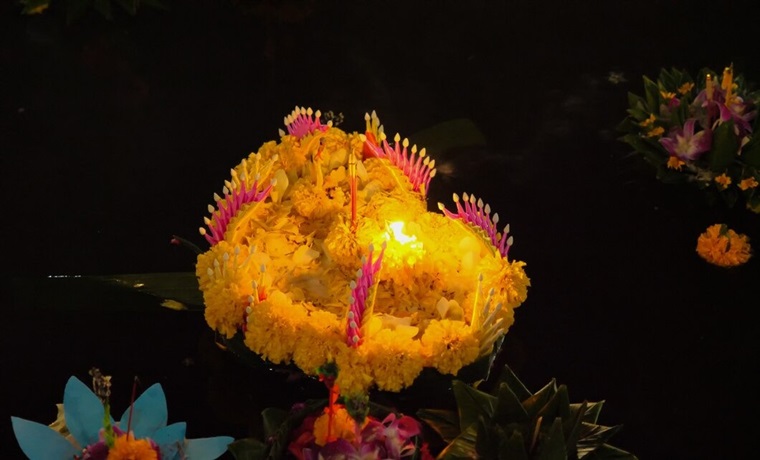
RVR Photography: Shaping Tomorrow’s Visionaries. By Simran
2. Bonalu Traditions: A Guide to the Celebrations
The Bonalu traditions are a spectacle to behold, characterized by various rituals and customs that add to the festival’s grandeur. Women dress in their best traditional attire, carrying pots filled with offerings for the goddess. These pots, known as ‘Bonam’, typically contain rice, curd, jaggery, and water, adorned with neem leaves and a lamp on top. The women carry the ‘Bonam’ to the temples, offering it to the deity while performing traditional dances known as ‘Thottelu‘.
An integral part of the festival is the ‘Pothuraju’ a male guardian figure who leads the processions. Adorned in turmeric, vermillion and neem leaves he dances vigorously, believed to ward off evil spirits. The drumming and rhythmic beats during the processions create an atmosphere of fervent devotion and celebration.
- The Ritual of Bonam
Women offer Bonam meaning meal to Goddess Mahakali by carrying decorated pots filled with rice, milk and jaggery in a vibrant procession to the temple. Accompanied by rhythmic drums and traditional dances the offering symbolizes devotion and seeks blessings for prosperity. - Pothuraju: The Festival Guardian
Pothuraju, the village goddess’s brother leads the procession with energetic dances. Adorned with bells, turmeric and vermilion his performance wards off evil spirits and energizes devotees. - Ghatam Procession
The Ghatam a sacred copper pot symbolizing the Goddess is carried in a grand procession on the festival’s final day accompanied by music and dancing, marking the climax of celebrations. - Folk Dances
Traditional dances like Kolatam, Lambadi, and Dappu add cultural vibrancy. Women perform Kolatam a rhythmic stick dance to folk songs celebrating the Goddess. - Animal Sacrifice
In some regions animal sacrifices are offered to appease the Goddess reflecting deep devotion. This practice however faces modern criticism and calls for humane alternatives. - Priests and Oracles
Priests and oracles play key roles conducting rituals and offering divine guidance. Oracles in a trance deliver messages from the Goddess enhancing the mystical essence of the festival.
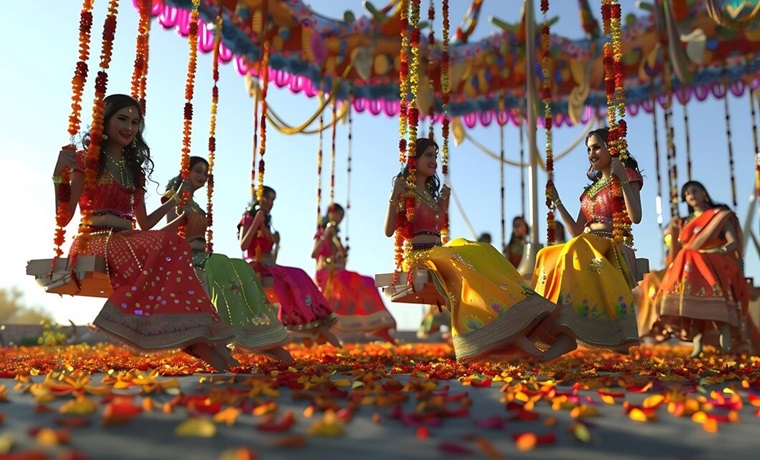
3. How Telangana Celebrates the Vibrant Bonalu Festival
Hyderabad the heart of Telangana celebrates Bonalu with unmatched enthusiasm and zeal. The city transforms into a colorful canvas with streets decorated with lights flowers and vibrant rangolis. Major temples like the Ujjaini Mahakali Temple in Secunderabad the Sri Akkanna Madanna Temple in Haribowli, and the Sri Mahakali Temple in Golconda fort become the focal points of the celebrations.
- Preparations and Decoration
The flower market during Bonalu is a vibrant hub, filled with colorful blooms like marigolds, jasmine and roses, essential for decorating Bonam pots and rituals dedicated to Goddess Mahakali.Weeks before Bonalu temples are cleaned and adorned with flowers, lights and rangoli. Idols are dressed in vibrant attire while homes and streets are decorated with mango leaves and neem branches. Markets buzz as people prepare for the festival, buying new clothes, flowers and food ingredients. - Rituals and Processions
The festival begins in Ashada at Golconda Fort with major celebrations at Ujjaini Mahakali, Balkampet Yellamma and Lal Darwaza temples. Women carry Bonam pots in grand processions, accompanied by music, dances and Pothuraju’s spirited performances. The Ghatam symbolizing the Goddess is carried in processions on the final day. - Temple Rituals
Bonam, sarees, and bangles are offered to the deity amid hymns and aarti. Oracles in trance provide divine messages, adding a mystical element to the celebrations. - Cultural Extravaganza
Bonalu features folk dances like Kolatam and Lambadi, music and fairs. Streets come alive with food stalls and traditional crafts showcasing Telangana’s cultural vibrancy. - Community and Inclusivity
Bonalu unites people across all backgrounds, promoting community bonds through shared meals (Prasadam) and collective celebrations. - Grand Finale
The festival concludes with the Ghatam procession to Lal Darwaza temple grand rituals and an illuminated temple leaving devotees spiritually rejuvenated.
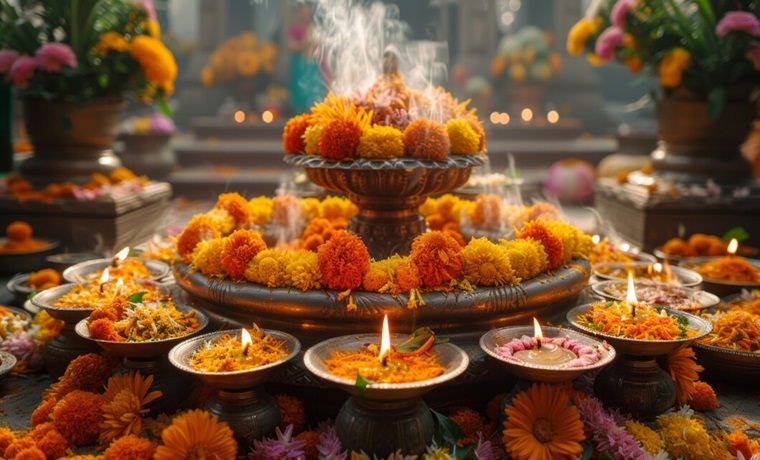
4. Understanding the Cultural Significance of Bonalu
The significance of Bonalu extends beyond the rituals and celebrations. It is a festival that unites communities fostering a sense of collective identity and pride. The festival is not only a religious observance but also a cultural manifestation of Telangana’s history, traditions and social fabric
- Significance of Bonalu Bonalu dedicated to Goddess Mahakali is a vibrant festival that represents Telangana’s cultural, social and spiritual identity.
- Religious Significance
Bonalu is a thanksgiving festival where devotees offer Bonam (a meal of rice, milk, and jaggery) to seek the Goddess’s blessings for health and prosperity. Rituals like the Bonam processions, Pothuraju dances and Ghatam symbolize devotion and divine protection.
- Cultural Significance
The festival showcases Telangana’s heritage through traditional dances like Kolatam and Lambadi, rhythmic Dappu beats, vibrant attire, rangoli and festive foods. It preserves and promotes regional art, culture and culinary traditions. - Social Significance
Bonalu fosters communal harmony, uniting people across castes and classes. Shared meals (Prasadam) symbolize inclusivity while active participation by all age groups especially women highlights its collective spirit. - Historical Significance
Bonalu originated in the 19th century as a thanksgiving to Goddess Mahakali for protecting Hyderabad from a plague. It symbolizes faith resilience and the community’s triumph over adversity. - Spiritual Significance
The festival provides spiritual renewal, allowing devotees to express gratitude, seek forgiveness and strengthen their faith. The rituals inspire devotion creating a transformative and uplifting experience.
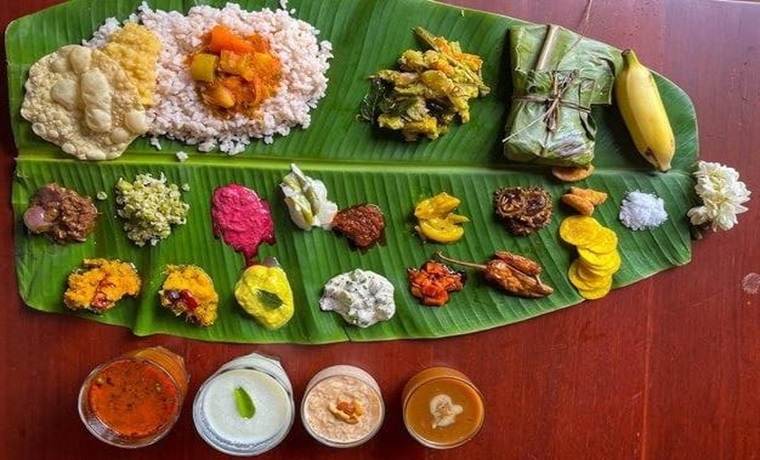
5. Delicious Foods to Try During the Bonalu Festival
The Bonalu festival food is a delightful aspect of the celebrations. The offerings made to the goddess are a variety of delectable dishes each with its unique flavor and significance.
Bonalu Festival Foods
- Bonam: A sacred offering to Goddess Mahakali made with rice, milk, and jaggery, symbolizing devotion and gratitude. Distributed as blessed Prasadam.
- Pulihora: A tangy tamarind rice dish, flavored with curry leaves, peanuts, and turmeric, offering a burst of traditional flavors.
- Garelu: Crispy lentil fritters, seasoned and deep-fried, served with chutney and sambar. Often part of the Bonam offerings.
- Payasam: A creamy rice pudding sweetened with jaggery or sugar, garnished with nuts, and served as a dessert or Prasadam.
- Mirchi Bajji: Spicy chili fritters, crispy and flavorful, served with tamarind or coconut chutney.
- Biryani: Hyderabadi-style fragrant rice dish, slow-cooked with marinated meat and aromatic spices, served with raita and salan.
- Poornam Boorelu: Sweet dumplings filled with jaggery and coconut, fried to perfection, adding a festive sweetness.
These foods are not only offerings to the goddess but also reflect the culinary traditions of Telangana. They are prepared with love and devotion symbolizing the bond between the devotees and the deity.
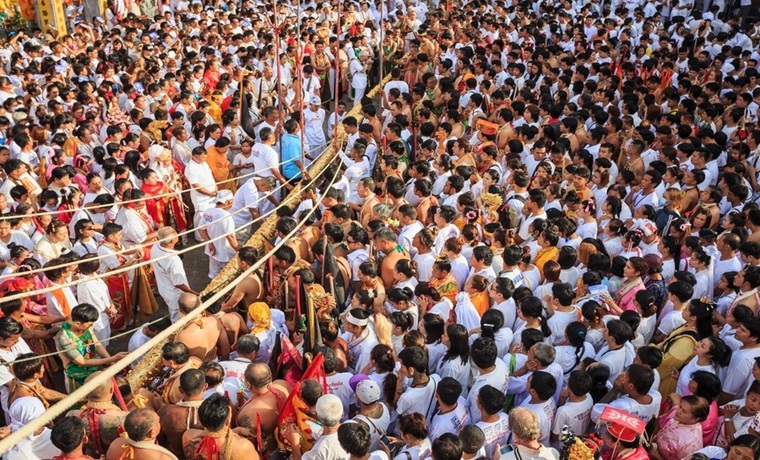
Conclusion:
Bonalu with RVR School of Photography: Capturing Cultural Richness
The vibrant traditions of the Bonalu festival provide a captivating glimpse into Telangana’s cultural heritage. For photography enthusiasts these vivid moments offer endless inspiration to create timeless visual stories. At the RVR School of Photography, you can elevate your craft by learning to capture the essence of Bonalu with precision and artistry.
By joining RVR School of Photography, you’ll gain the skills to document the vibrant colors, intricate rituals, and emotional depth of festivals like Bonalu. More than just taking pictures, you’ll uncover the stories and traditions that make Bonalu a celebration of cultural richness. Embrace this opportunity to transform cultural moments into impactful visual narratives with RVR School of Photography.
Clarify Your Doubts (FAQ's)
We reimburse all expenses of the Client for the payment of fines and penalties that were caused by mistakes made by us in accounting and tax accounting and reporting.
We reimburse all expenses of the Client for the payment of fines and penalties that were caused by mistakes made by us in accounting and tax accounting and reporting.
We reimburse all expenses of the Client for the payment of fines and penalties that were caused by mistakes made by us in accounting and tax accounting and reporting.
We reimburse all expenses of the Client for the payment of fines and penalties that were caused by mistakes made by us in accounting and tax accounting and reporting.
We reimburse all expenses of the Client for the payment of fines and penalties that were caused by mistakes made by us in accounting and tax accounting and reporting.
We reimburse all expenses of the Client for the payment of fines and penalties that were caused by mistakes made by us in accounting and tax accounting and reporting.
We reimburse all expenses of the Client for the payment of fines and penalties that were caused by mistakes made by us in accounting and tax accounting and reporting.
We reimburse all expenses of the Client for the payment of fines and penalties that were caused by mistakes made by us in accounting and tax accounting and reporting.

